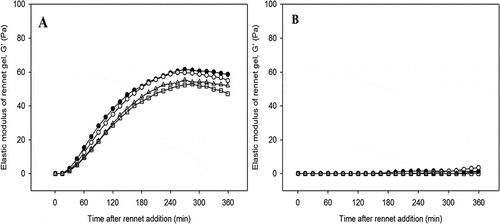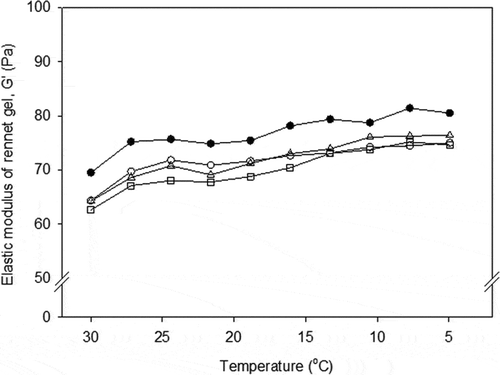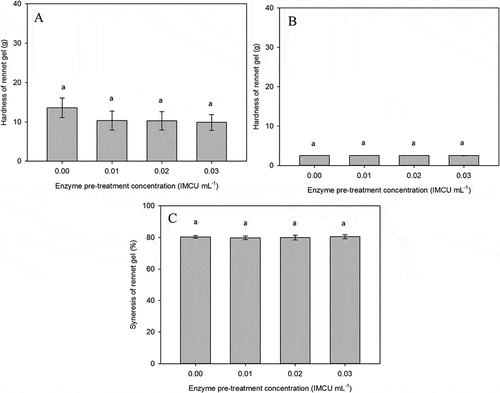Figures & data
Table 1. Effect of glucono-δ-lactone (GDL) addition on the properties of acid-induced gels made from low heat (LHT) and high heat treatment (HHT) milk with rennet concentrations of 0, 0.01, 0.02, and 0.03 IMCU mL−1. Gels were formed at 30oC for 360 min.
Figure 1. Representative graphs of elastic modulus (G′) as a function of time (A and B) and milk pH (C and D) for acid-induced gels made from enzyme treated low heat (A and C) and high heat treatment (B, and D) milk with rennet concentrations of 0.00 (●), 0.01 (○), 0.02 (Δ), and 0.03 (□) IMCU mL−1. Gels were made at 30oC for 6 h.
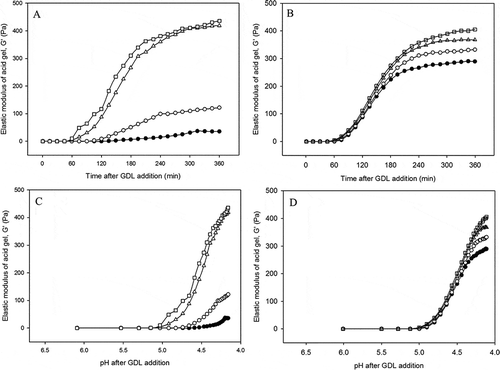
Figure 2. Representative graphs of elastic modulus (G′) as a function of temperature for acid-induced gels made from enzyme treated low heat (A) and high heat treatment (B) milk with rennet concentrations of 0.00 (●), 0.01 (○), 0.02 (Δ) and 0.03 (□) IMCU mL−1. Gels were made at 30oC for 6 h and cooled down to 5oC.
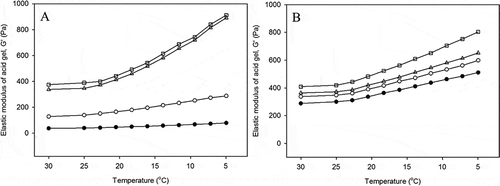
Figure 3. Gel hardness (A and B) and syneresis (C and D) of acid-induced bulk gel made from enzyme treated low heat (A and C) and high heat treatment (B and D) milk. Gels were formed at 30oC for 6 h.
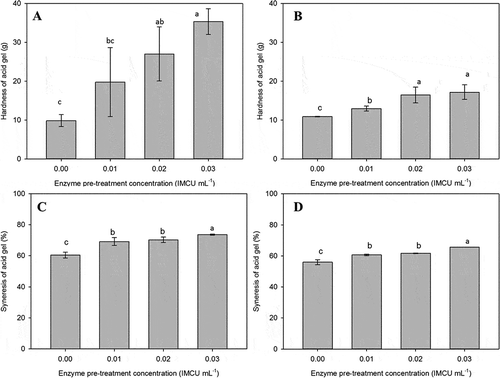
Table 2. Effect of rennet addition on the gelation properties of rennet-induced gels made from low heat (LHT) and high heat treatment (HHT) milk with rennet concentrations of 0, 0.01, 0.02, and 0.03 IMCU mL−1. Gels were formed at 30oC for 360 min.
Figure 4. Representative graphs of elastic modulus (G′) as a function of time for rennet-induced gels made from enzyme treated low heat (A) and high heat treatment (B) milk with rennet concentrations of 0.00 (●), 0.01 (○), 0.02 (Δ), and 0.03 (□) IMCU mL−1. Gels were made at 30oC and cooled down to 5oC.
